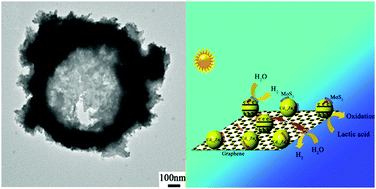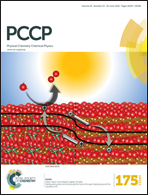Biomolecule-assisted synthesis of defect-mediated Cd1−xZnxS/MoS2/graphene hollow spheres for highly efficient hydrogen evolution†
Abstract
Moderate efficiency and the utilization of noble metal cocatalysts are the key factors that restrict the large-scale application of photocatalytic hydrogen production. To develop more efficient photocatalysts based on earth abundant elements, either a new material strategy or a fundamental understanding of the semiconductor/cocatalyst interfaces is highly desirable. In this paper, we studied the feasibility of in situ formation of defect-rich cocatalysts on graphene-based photocatalysts. A facile biomolecule-assisted strategy was used to self-assmble Cd1−xZnxS/MoS2/graphene hollow spheres. The defect-mediated cocatalyst and synergetic charge transfer around heterostructured interfaces exhibit a significant impact on the visible-light-driven photocatalytic activity of multicomponent solid solutions. With engineered interfacial defects, Cd0.8Zn0.2S/MoS2/graphene hollow spheres exhibited a 63-fold improved H2 production rate, which was even 2 and 3.8 times higher than those of CdS/MoS2/graphene hollow spheres and Cd0.8Zn0.2S/Pt. Therefore, our research provides a promising approach for the rational design of high-efficiency and low-cost photocatalysts for solar fuel production.


 Please wait while we load your content...
Please wait while we load your content...